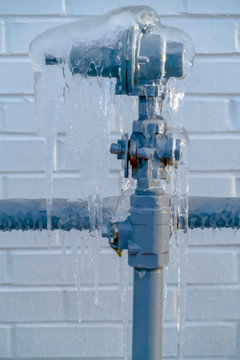Key Approaches for Preventing Frozen Plumbing in Cold Weather
Key Approaches for Preventing Frozen Plumbing in Cold Weather
Blog Article
The content below on the subject of Winter Plumbing Precautions: Preventing Frozen Pipes is exceedingly engaging. Give it a go and draw your own personal conclusions.

Winter can ruin your plumbing, particularly by freezing pipes. Below's how to avoid it from happening and what to do if it does.
Introduction
As temperature levels decrease, the threat of icy pipes boosts, potentially leading to expensive repair work and water damages. Recognizing how to avoid icy pipelines is important for home owners in cold climates.
Prevention Tips
Protecting vulnerable pipes
Cover pipelines in insulation sleeves or make use of heat tape to protect them from freezing temperatures. Concentrate on pipelines in unheated or outside locations of the home.
Home heating strategies
Maintain interior spaces effectively heated up, particularly areas with pipes. Open closet doors to permit warm air to flow around pipes under sinks.
How to recognize frozen pipelines
Search for lowered water flow from taps, unusual odors or noises from pipelines, and noticeable frost on revealed pipelines.
Long-Term Solutions
Architectural changes
Think about rerouting pipes far from outside walls or unheated areas. Include additional insulation to attic rooms, cellars, and crawl spaces.
Updating insulation
Purchase premium insulation for pipelines, attic rooms, and walls. Correct insulation aids maintain consistent temperature levels and lowers the threat of icy pipelines.
Safeguarding Outdoor Plumbing
Garden tubes and exterior taps
Separate and drain pipes garden hoses before winter season. Install frost-proof faucets or cover outside faucets with protected caps.
Recognizing Frozen Pipes
What creates pipelines to ice up?
Pipes ice up when revealed to temperatures listed below 32 ° F (0 ° C) for prolonged durations. As water inside the pipes ices up, it expands, putting pressure on the pipeline walls and possibly causing them to rupture.
Threats and damages
Frozen pipelines can lead to water system disturbances, residential property damages, and expensive repair work. Ruptured pipelines can flooding homes and cause substantial structural damages.
Signs of Frozen Piping
Recognizing icy pipes early can avoid them from breaking.
What to Do If Your Pipes Freeze
Immediate activities to take
If you think icy pipes, keep faucets open up to alleviate pressure as the ice melts. Use a hairdryer or towels soaked in hot water to thaw pipelines slowly.
Conclusion
Protecting against icy pipes requires positive steps and quick actions. By understanding the reasons, signs, and safety nets, house owners can safeguard their pipes during cold weather.
5 Ways to Prevent Frozen Pipes
Drain Outdoor Faucets and Disconnect Hoses
First, close the shut-off valve that controls the flow of water in the pipe to your outdoor faucet. Then, head outside to disconnect and drain your hose and open the outdoor faucet to allow the water to completely drain out of the line. Turn off the faucet when done. Finally, head back to the shut-off valve and drain the remaining water inside the pipe into a bucket or container. Additionally, if you have a home irrigation system, you should consider hiring an expert to clear the system of water each year.
Insulate Pipes
One of the best and most cost-effective methods for preventing frozen water pipes is to wrap your pipes with insulation. This is especially important for areas in your home that aren’t exposed to heat, such as an attic. We suggest using foam sleeves, which can typically be found at your local hardware store.
Keep Heat Running at 65
Your pipes are located inside your walls, and the temperature there is much colder than the rest of the house. To prevent your pipes from freezing, The Insurance Information Institute suggests that you keep your home heated to at least 65 degrees, even when traveling. You may want to invest in smart devices that can keep an eye on the temperature in your home while you’re away.
Leave Water Dripping
Moving water — even a small trickle — can prevent ice from forming inside your pipes. When freezing temps are imminent, start a drip of water from all faucets that serve exposed pipes. Leaving a few faucets running will also help relieve pressure inside the pipes and help prevent a rupture if the water inside freezes.
Open Cupboard Doors
Warm your kitchen and bathroom pipes by opening cupboards and vanities. You should also leave your interior doors ajar to help warm air circulate evenly throughout your home.

I am very fascinated by Winter Plumbing Precautions: Preventing Frozen Pipes and I hope you liked the entire page. Are you aware of another individual who is very much interested in 6 Ways to Prevent Frozen Pipes? Do not hesitate to promote it. Thanks a lot for your time. Please come visit our blog back soon.
Call Today Report this page